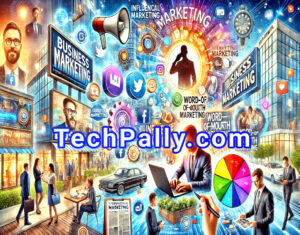How Digital Signage works & the Advantages of Electronic Billboards

Digital Signage (DS) is the use of technology to display information in a digital format, with the aid of output devices such as TV, e-Paper, etc.
It can be referred to as electronic billboard, dynamic signage, out of home advertising or outdoor marketing and other relative terms.
Digital signage can be used to enhance the navigation of people or offer services in a business environment like a hotel, shopping mall, hall, etc.
In a large business environment, a single person can control this tech from one room and display different information across the signage boards.
The information is transmitted purposefully, quickly, dynamically, and also interactively to the visitors.
The information that can be displayed can include different forms of media like texts, graphics, animations, videos, and can be in the slideshow.
Types of Digital Signage
Digital signage can be classified in different dimensions. For example, purpose, the mode of the display, the environment, and even the usage.
The dynamic transmission of multimedia information can be for the point of interest (POI) and the information can be advertising messages which are for the Point of Sales (POS).
For categorization according to the medium of display, the common ones are the following
- Digital Posters:
It is the use of an LCD screen that is mounted on a wall to display information. It’s simple to install and can be used for customer self-service and marketing.
The presentation and interaction of the digital signage systems in an environment are communicated via a network and can be managed centrally by one person.
- Ceiling Mounted Digital Signage:
Another way of getting the message across to the visitors is to mount the screen to the ceiling. This is good when people are confined in a place and not moving around or they will stay for a while
This can be used at the cash desk, reception or counter, conference hall, etc.
The information you want to display can be stored in a USB drive, computer, media player, cloud, etc and transferred to the signage software.
- Freestanding digital signage:
This is a little bit expensive and can be obstructive to the eyes. The signage is mounted to the floor in an enclosure and bolted to the ground.
Visitors get interacted with it as they move around. It can be used to strengthen the brand image, to entertain visitors, for navigation around the building or as a parking guidance system.
- Outdoor Digital signage:
This is becoming used in recent times. The screen is usually enclosed to make it durable as it’s exposed to natural elements like rainfall, sunlight, and dust.
It can be used to display price as you have at gas stations, for public awareness of an event or services in the community. It can be mounted to a bridge or in any high place where there’s always traffic.
Advantages of digital signage
There are several benefits of using digital signage for your business, either retail or in the production unit.
It makes navigation easy
It a large building or company, classic digital signage can aid the easy movement of visitors and direct them to the place they need to visit for their coming.
These may include the permanently attached symbols for the basic signage already mentioned, such as lifts, toilets and more. This can be attached once and it stays there.
It’s automated and in real-time
Digital signage mounted in different places in a building is controlled centrally on a system. The information can be updated from the digital signage software and the display will be updated immediately.
You can even modify messages according to the times of the day and season. You can use one messaging format in the morning and change that in the afternoon to a more relevant message to the time of the day.
Unlike before, there will have to be another printing cost, the information would have to be proofread and the previous display will be removed before posting another one.
This used to take several people and several hours but can now be updated within seconds.
You can easily test the Marketing message that works
Since you can update the message on the LCD screen in realtime, you can A/B test your marketing messages on different screens.
You can easily change the marketing message that doesn’t work to a more effective tactic. Also, you can align your marketing tactic to a big event that’s about to happen or already ongoing.
For example, during Christmas, hajj, soccer world cup, Olympics and other big events. You just have to be creative with it. This gets people sticker to the message during such times.
Digital signage can think like humans
Cameras and sensors can be integrated into the system to make it automate some processes. For example, if a place is overcrowded, it detects it and displays new guidance on where people should go and get their issues addressed.
You don’t need to make announcements or end human personnel to tell people what to do, this takes away administrative time.
It enhances safety on your premises, improves customer experience because your visitors don’t have to be stressed up. It’s called smart route guidance.
It’s attention-grabbing
A digital poster can reduce the perceived wait time of the visitors.
In a situation where people want to complain or will have to wait for some time before their issue is addressed, digital signage can keep them entertained.
Eye-catching brand graphics on the vision, mission, and development of the brand can be displayed on the signage, video ads and other informational messages that can be displayed to keep the visitors happy while waiting.
Conclusion
Digital signage can be displayed on small and large screens for the presentation of information.
The information can be compressed, streamed and updated in real-time. The message on the signage can be a combination of graphics, texts, and sound background.
It can as well be in video, animation or interactively with intercommunication via touch screen, keys, cursor or speech.





